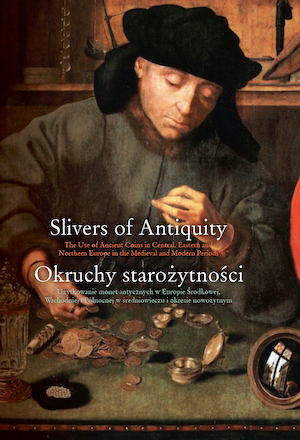ANCIENT COINS AND THEIR FUNCTIONS: MEDIEVAL AND MODERN WRITTEN SOURCES FROM POLISH LANDS / MONETY ANTYCZNE ORAZ ICH FUNKCJE W ŚWIETLE ŚREDNIOWIECZNYCH I NOWOŻYTNYCH ŹRÓDEŁ PISANYCH Z ÓWCZESNYCH ZIEM POLSKICH
ANCIENT COINS AND THEIR FUNCTIONS: MEDIEVAL AND MODERN WRITTEN SOURCES FROM POLISH LANDS
Author(s): Tomasz Maćkowski
Subject(s): Anthropology, Archaeology, Cultural Anthropology / Ethnology
Published by: Wydawnictwa Uniwersytetu Warszawskiego
Keywords: ancient coins; written sources; medieval and modern history of Poland
Summary/Abstract: There is evidence that during the medieval and modern period, ancient coins in the Polish lands had different functions, ranging from that of currency to personal ornament. This is revealed by the analysis of their archaeological context when recovered during archaeological excavation. However, all too often the interpretation of the archaeological sources might be affected by the presentist limitations of researchers – which make it harder to grasp the historical reality, encourage the construction of poorly substantiated hypotheses, and generally leading them astray. Therefore, every piece of written evidence which is an expression of the mentality of the people of that age is invaluable for our purpose. In the Middle Ages, very little was written about ancient coins. The earliest reference to them comes from 1445 where they are called “Saint John’s pennies” because of the perceived resemblance of the emperor’s head depicted on them to the image of the severed head of Saint John on a platter. Among the simple folk, this belief was deeply ingrained. As everywhere in Europe a fundamental change came with the beginning of the Renaissance. Roman coins found locally and those brought from Western Europe started attracting wider attention. This is reflected in the written record. The 16th century saw the production of the first treatise on the Hebrew monetary system penned by S. Grzepski. Numerous collections were established. Next to monarchs and members of aristocracy, a major role was played by the inhabitants of three cities found in the Baltic province – Toruń, Elbląg and most of all, Gdańsk. This collecting activity generated collections and auction catalogues that have come down to us. The nobility was ready to view the Roman denarii found in Polish lands as a material historical source confirming their mythical descent from Sarmatians. Furthermore, the iconography of ancient coins provided a model for 17th and 18th century coins, tokens and medals.
- Page Range: 89-111
- Page Count: 23
- Publication Year: 2020
- Language: English, Polish
- Content File-PDF

